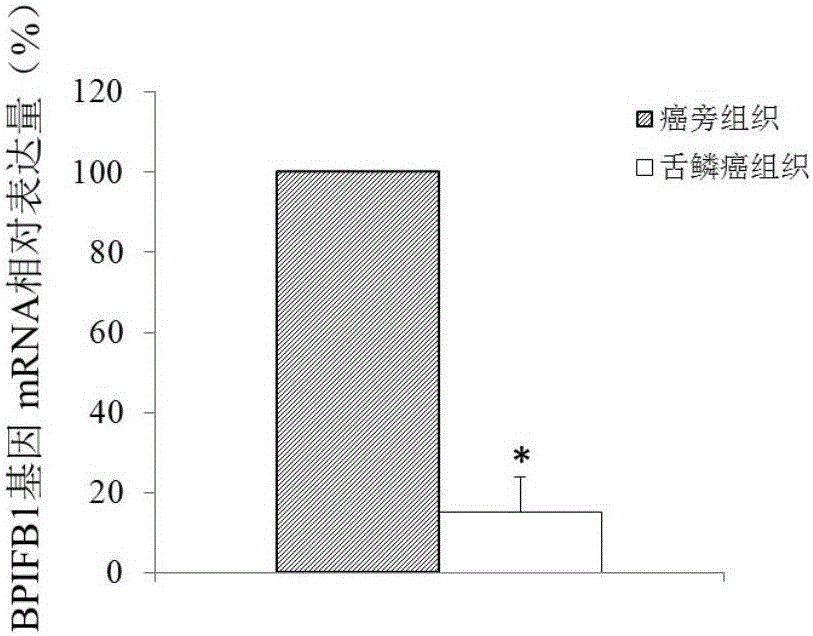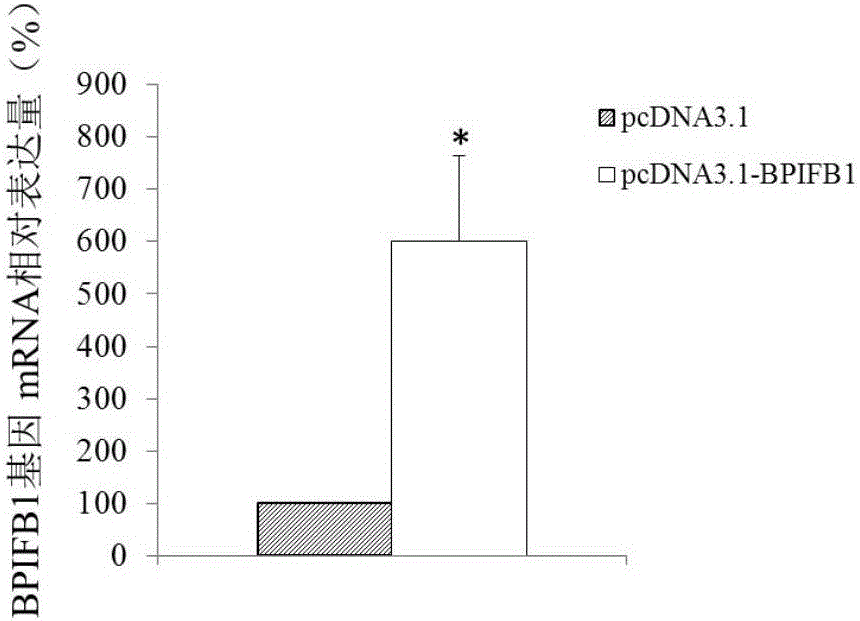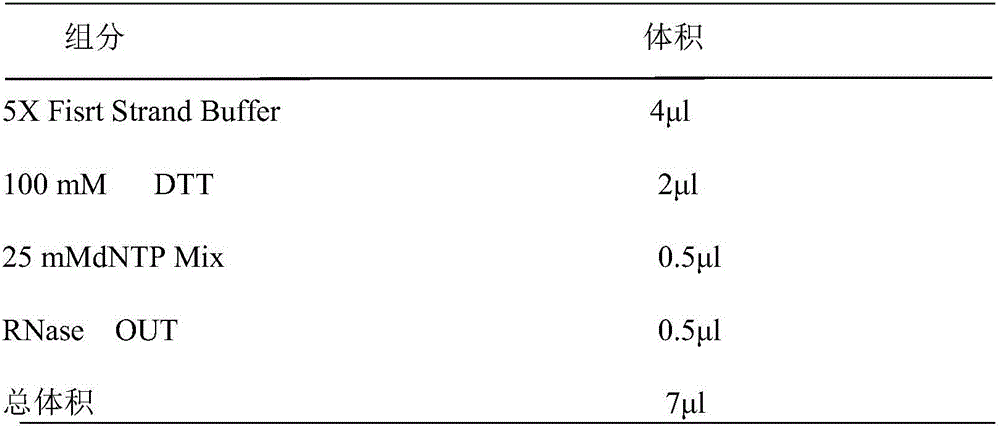Novel application of BPIFB1 to preparing tongue squamous cell carcinoma diagnosis and treatment preparations
A technology of tongue squamous cell carcinoma and reagents, applied in the treatment, BPIFB1 gene in the field of diagnosis of tongue squamous cell carcinoma, can solve the problems of inability to further expand microquantification, inability to form scale, and expensive sequencing methods
- Summary
- Abstract
- Description
- Claims
- Application Information
AI Technical Summary
Problems solved by technology
Method used
Image
Examples
Embodiment 1
[0058] Example 1 Differences in the expression of BPIFB1 gene between tongue squamous cell carcinoma tissue and adjacent tissue
[0059] 1. Experimental materials:
[0060] The 20 cases of tongue squamous cell carcinoma and paracancerous tissue samples were taken from patients who underwent radical resection of tongue squamous cell carcinoma. All tissue samples were confirmed by histopathology, and a consent form was signed for voluntary donation for use in this experiment. The specimens were collected within 30 minutes of the surgical procedure, and then collected under the guidance of pathologists. The size of each sample is about 1.0cm*l.0cm*l.0cm. The cancerous tissue was the central area of the tumor when the material was collected; the corresponding paracancerous tissue was the tissue 1-2cm away from the edge of the cancerous tissue. All specimens were placed in 1.5ml EP tubes and stored in liquid nitrogen tanks. All specimens were collected from patients who had no...
Embodiment 2
[0150] Example 2 Large sample verification differentially expressed gene BPIFB1 gene
[0151] 1. Experimental materials
[0152] According to the method of Example 1, 50 tongue squamous cell carcinoma tissues and their corresponding paracancerous tissues were collected.
[0153] 2. RNA extraction
[0154] With embodiment 1.
[0155] 3. Reverse transcription
[0156] The reverse transcription of RNA was carried out using the reverse transcription kit of TAKARA company.
[0157] 4. QPCR
[0158] (1) Primer design
[0159] QPCR amplification primers were designed according to the coding sequences of BPIFB1 gene and GAPDH gene in Genbank, and synthesized by Shanghai Sangon Bioengineering Technology Service Co., Ltd. The specific primer sequences are as follows:
[0160] BPIFB1 gene:
[0161] The forward primer is 5'-ACCAACTTATACTCAACTT-3' (SEQ ID NO.3);
[0162] The reverse primer is 5'-GATCTCAGTGATGATGTT-3' (SEQ ID NO.4),
[0163] GAPDH gene:
[0164] The forward primer ...
Embodiment 3
[0175] Example 3 BPIFB1 Gene Expression Plasmid Construction
[0176] 1. Construction of BPIFB1 gene expression vector
[0177] Amplification primers were designed according to the coding sequence of the BPIFB1 gene (as shown in SEQ ID NO.1). Amplify the coding sequence of the full-length BPIFB1 gene from the cDNA library of adult fetal brain (clontech company, article number: 638831), insert the above cDNA sequence into the eukaryotic cell expression vector pcDNA3.1, and connect the obtained recombinant vector pcDNA3.1 -BPIFB1 was used in subsequent experiments.
[0178] 2. Culture and transfection of tongue squamous cell carcinoma cells
[0179] Cell culture: Take the tongue squamous cell line Tca8113 and culture it in DMEM containing 10% calf serum at 37°C and 5% CO 2 cultured in a cell culture incubator.
[0180] Tongue squamous cell carcinoma cells by 1×10 4 Inoculate / well into 24-well cell culture plates at 37°C, 5% CO 2 The cells were cultured in the incubator for...
PUM
 Login to View More
Login to View More Abstract
Description
Claims
Application Information
 Login to View More
Login to View More - R&D
- Intellectual Property
- Life Sciences
- Materials
- Tech Scout
- Unparalleled Data Quality
- Higher Quality Content
- 60% Fewer Hallucinations
Browse by: Latest US Patents, China's latest patents, Technical Efficacy Thesaurus, Application Domain, Technology Topic, Popular Technical Reports.
© 2025 PatSnap. All rights reserved.Legal|Privacy policy|Modern Slavery Act Transparency Statement|Sitemap|About US| Contact US: help@patsnap.com



